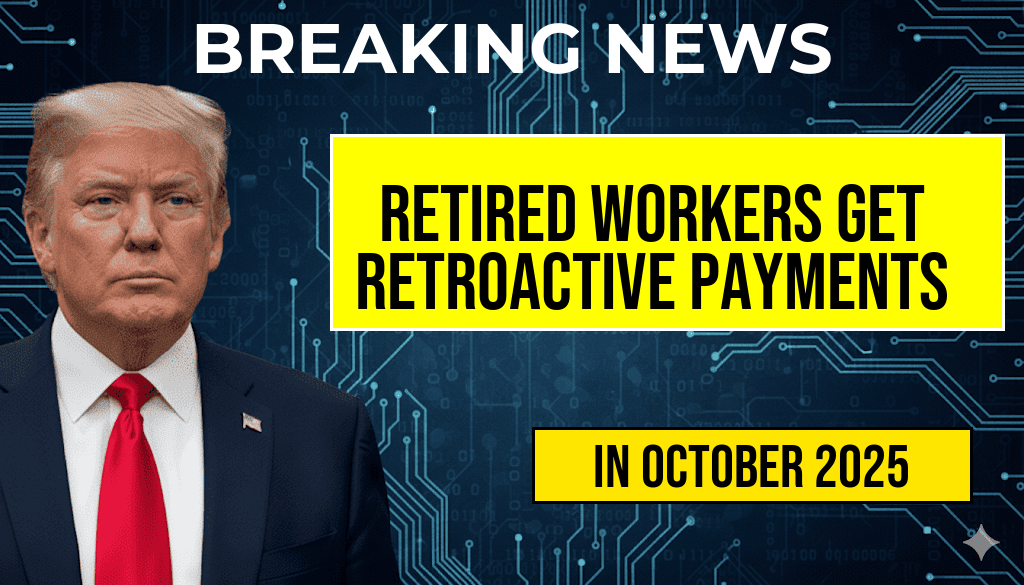Thousands of retired workers across the United States are set to receive **retroactive payments** totaling up to several thousand dollars, following the recent repeal of the Windfall Elimination Provision (WEP) and Government Pension Offset (GPO). The change, enacted through legislation signed into law late last year, aims to correct longstanding disparities that had reduced benefits for millions of retirees who earned pensions from federal, state, or local government jobs while also contributing to the Social Security system. Approximately 3.2 million beneficiaries stand to benefit from the new provisions, which will be reflected in adjusted benefit calculations and one-time retroactive payments. This development marks a significant shift in how benefits are calculated for recipients with mixed work histories, offering financial relief after years of uncertainty and dispute over the impact of WEP and GPO.
Understanding the Repeal and Its Impact on Beneficiaries
The Historical Context of WEP and GPO
The Windfall Elimination Provision (WEP) and the Government Pension Offset (GPO) are federal rules established decades ago that limit or reduce Social Security benefits for certain public-sector workers who also receive a government pension. WEP reduces the retirement benefit amount for those who earned a pension from employment not covered by Social Security, while GPO offsets spousal or survivor benefits for individuals receiving a government pension.
These provisions have long been criticized for disproportionately affecting teachers, firefighters, police officers, and other public servants, often resulting in thousands of dollars in annual benefits lost. Critics argued that WEP and GPO create unfair penalties for workers who contributed to both systems, prompting legislative efforts to reform the rules.
Legislative Changes and the Repeal
In late 2022, Congress passed the Retirement Fairness Act, which effectively repealed the WEP and GPO, and was signed into law by President Biden. The legislation aimed to simplify benefit calculations and restore fairness for public employees. The key aspects of the law include:
- Elimination of the WEP for new retirees, starting from January 2023.
- Gradual phasing out of the GPO offsets for spousal and survivor benefits.
- Provision for retroactive payments to beneficiaries affected by prior calculations under the old rules.
Officials estimate that approximately 3.2 million beneficiaries will see adjustments to their benefits, with many receiving lump-sum payments reflecting the difference between what they were originally paid and what they should have received under the new rules.
How Retroactive Payments Are Calculated and Distributed
Eligibility and Calculation Process
The Social Security Administration (SSA) has begun reviewing cases to identify beneficiaries eligible for retroactive adjustments. The process involves comparing the original benefit calculation—based on WEP and GPO rules—with the new computations that exclude these provisions. The difference determines the amount owed to each individual, which can range from a few hundred to several thousand dollars.
| Work History Type | Typical Retroactive Payment Range | Notes |
|---|---|---|
| Public sector worker with minimal Social Security credits | $500 – $1,500 | Smallest adjustments, often due to limited SSA contributions |
| Public sector worker with substantial Social Security credits | $2,000 – $5,000 | Largest retroactive payments expected |
Recipients will receive notices detailing their specific retroactive amounts, with the payments issued via direct deposit or check, depending on their setup with the SSA.
Timing and Implementation
The SSA has prioritized processing these adjustments, with most beneficiaries expected to see payments by mid-2024. The agency has also set up dedicated support lines and online portals to assist with questions and clarify individual cases. Beneficiaries are encouraged to review their Social Security statements and consult the SSA’s official website for updates.
Broader Implications for Retirement Security
Financial Relief for Retirees
The retroactive payouts provide much-needed financial relief for many retirees who relied on benefits that were previously reduced. For some, these payments could amount to several thousand dollars, helping cover medical expenses, housing costs, or other essential needs.
Moreover, the repeal of WEP and GPO could positively influence future retirement planning, as workers in public service now face less uncertainty regarding their benefits. This change underscores ongoing efforts to make Social Security more equitable and supportive of all workers, regardless of employment history.
Potential Challenges and Future Considerations
While the legislative reforms are generally welcomed, some experts caution that the full effects on the Social Security trust fund remain to be seen. The increased payouts could impact long-term sustainability, prompting discussions about future adjustments to funding and benefit structures.
Additionally, some beneficiaries may face delays or complications in the retroactive payment process, especially if their records require manual review. As the SSA continues to implement these changes, beneficiaries are advised to stay informed through official channels.
For more information about Social Security benefits and recent legislative updates, visit the Social Security Administration’s official site or consult trusted financial planning resources such as Forbes or the official Wikipedia page on Social Security.
Frequently Asked Questions
What is the recent update regarding WEP and GPO for retired workers?
Retired workers are now receiving retroactive payments totaling up to thousands of dollars following the repeal of the Windfall Elimination Provision (WEP) and Government Pension Offset (GPO). This change benefits approximately 3.2 million beneficiaries.
Who qualifies for the retroactive payments after the repeal?
Beneficiaries of retirement benefits who were affected by WEP and GPO provisions and are eligible for Social Security benefits qualify to receive the retroactive payments.
How much can beneficiaries expect to receive from these retroactive payments?
Beneficiaries can receive up to thousands of dollars in retroactive payments, depending on their individual benefit calculations and the duration affected by the provisions.
When did the WEP and GPO repeal take effect?
The repeal of WEP and GPO was implemented recently, allowing affected beneficiaries to claim retroactive payments for benefits dating back to the effective date of the repeal.
How can eligible workers or beneficiaries claim their retroactive payments?
Eligible individuals should contact Social Security Administration or visit their website to understand the claim process for retroactive payments and ensure they receive the benefits they are entitled to.





